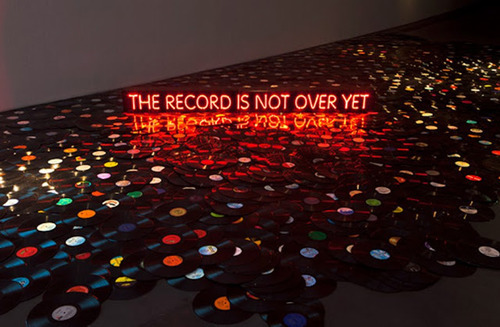firehose
Shared posts
Liefeld, Piskor recruited for ‘Transformers vs. G.I. Joe’ covers
GOG.com adds enhanced Mac, language support to select games
 Good Old Games added more titles to its Mac library this week, boosting its RPG selection with a few classic titles. Mac-compatible versions of Baldur's Gate: The Original Saga, Baldur's Gate 2 Complete, Icewind Dale Complete, Icewind Dale 2 Complete...
Good Old Games added more titles to its Mac library this week, boosting its RPG selection with a few classic titles. Mac-compatible versions of Baldur's Gate: The Original Saga, Baldur's Gate 2 Complete, Icewind Dale Complete, Icewind Dale 2 Complete...
rudygodinez: Edward Emerson Barnard, Milky Way Near Messier 11,...

Edward Emerson Barnard, Milky Way Near Messier 11, (1892)
Photographed at the Lick Obsevatory, California on June 29,1892. Collection of the Swiss Federal Observatory.
sirdef: Female Creators Appreciation Week ☞ Stephanie Hans...
Once you care about social justice…everything is offensive and nothing is fun
firehoseha ha
oh no! I care about _other people_, that makes _me_ the horrible shitty boring asshole
fucking amercia
A group of hip, socially conscious coworkers try to figure out how they’ll spend their day, but they can’t. Because absolutely every idea they come up with will have profoundly negative consequences…
TV Club Classic: Doctor Who (Classic): “The Moonbase”

“The Moonbase” (Season 4, episodes 23-26. Originally broadcast Feb. 11-March 4, 1967.)
Whatever flaws it may have, and it’s far from perfect, “The Moonbase” has more than enough going for it to earn a place as one of the must-see serials of the Second Doctor era. For one thing, with its two missing episodes newly reconstructed via animation (and newly out on DVD), it’s currently the earliest complete serial featuring Patrick Troughton as the Doctor, whose three seasons were particularly hard-hit by the BBC’s old policy of erasing its archived videotapes. So one of its chief pleasures is watching Troughton, who’s easily in the top three actors to play the Doctor, while he’s still settling on exactly how he’ll play the role. It’s also a thriller that makes up in fast-paced and tension-filled atmosphere what it loses in some implausible contrivances and sloppy ...
An Epic Wind Turbine is Spinning in Scotland
The world's largest wind turbine is off the coast of Scotland. Construction started in 2012, with pieces assembled in the winter of 2013. Now the prototype is churning out enough power to supply 4,800 homes.
Action Movie Kid Goes To School
The Pokémon Theme, As A Slow Jam
How Two Sets Of Undercover Journalists Accidentally Ended Up Investigating Each Other
Search For Missing Boy Called Off Since He Only Existed On Facebook
This guy was walking down the middle of the Glenn Jackson bridge. That's a flag strapped to a rolling cross. He was flipping off traffic. Sorry for the potatogram'd quality.
firehosewelcome to Portland
 |
submitted by fstahp [link] [31 comments] |
Awesome Jobs: Meet Linda Gormezano, Polar Bear Poop Tracker
firehosevia Tertiarymatt
http://www.universalbunny.com/wp-content/uploads/tumblr_m23cn7uOnA1qm18qco3_r1_500.gif
Understanding the changing dietary habits of polar bears is the key to seeing how climate change and shrinking polar ice is affecting their lifestyles. And the best way to know what’s happening with their diet? Look at their poop, of course! Linda Gormezano, an ecologist at the American Museum of Natural History in New York City, has trained her dog Quinoa to help her find the best samples left by bears as they cross the frozen Canadian tundra. Gormezano chatted with us about why poop is such a useful scientific specimen and what it’s like to spend months living in a camp in the heart of polar bear country.
 A grouping of adult male polar bears along the coast of western Hudson Bay in summer (photo credit: Robert F. Rockwell)
A grouping of adult male polar bears along the coast of western Hudson Bay in summer (photo credit: Robert F. Rockwell)What’s ecology and how does it apply to polar bear research?
Ecology is the interaction between animals and the environment. What we’re studying is how polar bears behave on land with respect to available food -- what they eat and where they eat it. What I’m particularly interested in is how they hunt other animals and how the calories they gain from consuming them are going to affect their annual energy budget as their access to ice becomes more limited.
We collect scat and hair samples non-invasively. After consuming food on the ice or on land some bears leave scat. Also some bears rest right along the coast, bedding down in sand and grass where they leave hairs behind, while others head further inland and leave hair in dens.
What, exactly, is an energy budget?
Nobody really knows how often polar bears in western Hudson Bay capture seals, but they get a certain amount of energy from consuming seals they hunt out on the ice and that energy allows them to survive on land for 4-5 months each year. If the ice melting earlier each year causes polar bears to have less time to hunt seal pups in spring, they may be taking in fewer calories over the course of the year.
What we want to know is, now that they’re eating more of certain types of foods on land, what kind of energetic benefits might polar bears be experiencing? Up until now many have thought what they were eating on land wasn’t really helping them at all. To evaluate this, we are examining the energetic costs and benefits of capturing and consuming those foods as well as how often the behavior occurs. Only then can we determine whether these foods could help alleviate nutritional deficits that polar bears may come ashore with.
What do they eat on land?
They’ve always eaten food on land. From historical records, we know they’ve eaten grasses, marine algae, moss, rodents, eggs and birds, even muskoxen. Some of these records date back to the 1800s. Although they’ve always eaten food on land, polar bears are believed to currently be in poorer condition because they have less time to access seals on the ice.
But what we’re finding is they’ve switched their diet. I analyzed 642 polar bear scats collected from 2006 to 2008 and created an inventory of the foods they were eating. We compared our results to a study performed in the late 1960s to see how the frequency of certain foods has changed. We see that they’re eating more of what’s available on the landscape today – especially caribou, snow geese and their eggs.
 A polar bear scat collected on land in summer in western Hudson Bay containing caribou fur, goose egg shells, a hatching membrane and marine algae (photo credit: Linda J. Gormezano)
A polar bear scat collected on land in summer in western Hudson Bay containing caribou fur, goose egg shells, a hatching membrane and marine algae (photo credit: Linda J. Gormezano)Populations of caribou and nesting snow geese have both exploded since the 1960s. Also, because the polar bears are coming ashore earlier, they’ve started overlapping the incubation period of the snow geese. When the females are sitting on their nests polar bears can just wander through the colonies, scare off the females and eat their eggs. They occasionally capture the females as well.
The increased availability of these foods coincided with the climate-related changes to the ice, which have only become apparent in the last 30-40 years in the region. If eating these novel foods provides an energetic benefit to bears coming ashore hungry then they may compensate for calories that they lose from not being able to hunt seals. This could increase their chances of surviving on land as the ice-free period expands.
Would it be a surprise if you found out the new eating behavior was beneficial for them? After all, If it wasn’t helping them would they still eat it?
You would think any animal would engage in a behavior that’s going to benefit them otherwise it would be maladaptive. There are questions, however, as to whether a polar bear can energetically benefit from chasing after prey on land. That is, would they gain more calories from consuming an animal than they would spend in the chase to capture it?
We’ve observed polar bears repeatedly chasing and capturing geese when they’re flightless in July and August. We have also found that they use energy-conserving techniques such as ambushing and stalking to hunt birds and caribou, which may allow the some bears to energetically profit, whereas a long chase might not.
Eggs are an important exception to this because very little energy is expended to obtain them. They just need to walk through a nesting colony.
How do you figure out what they’re eating?
We collected roughly 1,500 piles of polar bear scats in summer as the bears were coming ashore. We poke through them and see what remains we can identify.
We collected roughly 1,500 piles of polar bear scats in summer as the bears were coming ashore. We performed morphological analysis. In other words, we poke through them and see what remains we can identify. That involved removing different items like plants, hairs, bones and feathers and identifying them under a microscope or comparing them to a reference collection.
Right now we’re taking it further by doing genetic analysis. For example, we’re using sex markers to match up the diets with the sex of the animal and using barcoding techniques to see if there were certain animals we missed. A lot of times we just saw black substances in the scat and it wasn’t clear what it was. With the barcoding, which we are doing in collaboration with a lab in France, we can see how much of that unknown substance was really whale blubber, seal, or fat or muscle of a land animal. I’m in the process of analyzing those data right now.
Where do you stay when you’re collecting samples?
One thing I didn’t mention is I don’t find the scat, my dog Quinoa finds it. During a good portion of the summer we lived out of a camp, Nestor 2, in Wapusk National Park in Manitoba. It’s pretty remote and only accessible by helicopter. Some of the research is done by foot near the camp, but mostly we get transported down the coast and further inland by helicopter, which is based out of the nearest town, Churchill, Manitoba.
It’s a series of eight buildings, some recently built, others that have been there for many years. There’s a sleeping area, a cooking area, storage, and workspace. It’s right off the shore of the Mast river. We filter water and we’re mostly self-sustaining out there.
It’s a very small community. There are no more than 16 people there at one time. It’s in the middle of polar bear country so we have an electric fence around it and very strict protocols on how to deal with bears.
Like what?
We have ladders that go up on the buildings so when bears are sighted (we have a rotation of lookouts for bears) everyone gets on top of a building. Even in the middle of the night. The protocols are for the dog also. We made a special ladder for him so he went up on the roof as well. He fell in line.
If a bear is adamant and remains near the fence, we load our shotguns with cracker shells, which are basically noise makers. We have magnum slugs ready to go but we’ve never had to use them. In 46 years of the camp being in existence we’ve never had to destroy a bear.
These protocols are pretty amazing. When they come near the fence we shoot off these cracker shells and hopefully they learn to associate the shock with the loud noise and it scares most of the bears away. There have been exceptions. A cub was able to squeeze through the fence so that the mother and the cub were separated. We eventually got the cub out and no one got hurt.
After the summer work is completed, we close up the camp and take down the fence so bears can access the camp anywhere. Even though it’s locked up during winter, sometimes the bears get curious and try to get in. When opening it up in spring to do a series of projects, we have had damage from bears entering buildings -- very often they’ll just plow through the walls.
They’re attracted to all types of things. They’ve been known to eat SOS pads and cleaners and things that are oil-based. They’re also just curious. Even though there’s no food left and the place is cleaned well, any lingering scents or just curiosity can draw them in.
How many bears live nearby?
There’s a lot of movement of bears around the area. In summer when they’re coming off the ice, they move up and down the coast. Females with cubs and younger bears tend to move further inland and the adult males stay closer to the coast. So we tend to have more family groups and subadults around the camp, wandering around and possibly looking for food.
 Ice flows along the coast as the ice breaks up in summer in western Hudson Bay (photo credit: Linda J. Gormezano)
Ice flows along the coast as the ice breaks up in summer in western Hudson Bay (photo credit: Linda J. Gormezano)Although other researchers are tracking movements with GPS collars on some of the females, we prefer to gather this information noninvasively so that the bears don’t experience the stress of being captured.
The number of bears coming ashore and passing through varies depending on the pattern and speed of ice-breakup in Hudson Bay. Some females are attracted to certain denning spots so they may cross the area where the camp is to go to those areas. By collecting passively shed hair from beds and dens we’re hoping to track movement patterns of bears traveling while they are on land and examine the relatedness of bears that hang out together along the coast or den near each other further inland.
Although other researchers are tracking movements with GPS collars on some of the females, we prefer to gather this information noninvasively so that the bears don’t experience the stress of being captured. (You can’t put collars on males because their necks are bigger then their heads and they just fall off.)
How did you train Quinoa to find bear scat?
I got him when he was six months old at a kennel in Rhode Island. His mother was trained for drug detection work and his father for bite work -- attacking and holding people. The people who raised Quinoa wanted to train him for bite work but he wasn’t aggressive enough. They said he was a lover not a fighter. So I thought he’d be perfect for finding scat because he had a strong play drive. He’s a Dutch Shepherd, very agile and high energy. When he was young I got him obsessed with playing ball and hid his toys to teach him to find things. As soon as he found the toy we would play ball.
Then I expanded it to scat. He’s trained on polar bear and coyote scat.
Where did you get the scat to train him?
I got it from zoos around the country, but also local zoos in the Bronx and Queens that housed polar bears. I trained him to do a passive alert when he smelled his target scent – in this case, polar bear scat. That is, he sits down quietly and waits for his reward, which is 5 tosses of a rubber ball or tug of war.
I trained him off of other scents like grizzly, black bear, and red fox to make sure he understood the difference. He knows he only gets the reward when he finds coyote and polar bear.
Does he mostly work in the woods?
In the National Park in Canada where we sample for polar bears the landscape is mostly open tundra. He does work in the woods, too. We work locally finding coyote scat in and around New York City. We were actually in the woods yesterday.
What’s a day like with Quinoa out in the tundra?
We woke up, packed both the collection and dog gear, brought lots of food and water and got ready to fly to study area. If I was working with the dog I often did not carry a shotgun. My PhD advisor at the time, Robert Rockwell, acted as bear warden as well as hair collector and there was usually one other person with a shotgun helping out while I was handling the dog.
 Playing tug of war with Quinoa as a reward for finding polar bear scat. (photo credit: Robert F. Rockwell)
Playing tug of war with Quinoa as a reward for finding polar bear scat. (photo credit: Robert F. Rockwell)We took the helicopter to different spots, landed, and I would put the dog on a 30-foot line to begin sampling. He would weave back and forth along the coast, looking for scat while the others would collect hair or work on other projects that were currently going on. The helicopter would stay in the spot and listen by radio for when to pick us up or fly down the coast to the end of our transect and wait for us (usually half a mile away).
We were always in contact for situations where bears might approach.
What kinds of gear do you bring with you?
For a day of sampling we would bring food for me and the dog, water, reward balls, plastic bags, markers, GPS, and radios to keep in contact with everybody on the ground. We would also bring extra layers in case the temperature drops. In the summer it occasionally goes below freezing, but for the most part it was pretty warm.
If the wind picks up and shifts to the north, it could be 50 degrees and the temperature could drop 20-30 degrees in a matter of minutes. It gets horribly, bitingly cold. Even the dog now has a lot of clothing and booties.
Does he enjoy it?
He’s a working dog. Most Dutch Shepherds just enjoy working and pleasing their owner. He absolutely loves it. When we get close to working, if he sees me pack up the gear, he starts whining and crying and he gets very excited.
 Quinoa and Linda searching for polar bear scat along the shore of an inland lake. (photo credit: Robert F. Rockwell)
Quinoa and Linda searching for polar bear scat along the shore of an inland lake. (photo credit: Robert F. Rockwell)How long did you typically stay out in the park?
For the three years that we were collecting scat we would arrive at the end of May and stay until the middle of August. Rather than fly the dog the entire way from NY to Churchill, which was traumatic for him, we drove the dog to Winnipeg, parked our car, and then flew in from there. We usually did the drive in record time. Most normal humans would have taken longer, but we drove around the clock and could do it in three days from New York.
What are you working on now?
There have been sightings of coyotes in Central Park in New York City, as well as different areas of the Bronx, Manhattan and even in Queens. And we know for sure there are plenty of coyotes in Westchester. I’m collecting coyote scat as part of a collaborative project to track how coyotes are moving into and through the city. Are they staying in these parks and how many are there?
The idea is to collect scat and use genetic analysis to confirm that it’s definitely coyote. If the scat is viable enough we can identify individual coyotes and estimate the minimum number that are residing in a specific area.
Remote cameras were first set up and indicated that coyotes have begun to move in. It’s exciting to have the dog signal on scat in areas of New York City where you wouldn’t expect it.
You wouldn’t think of it as a place that’s wild enough to have coyotes, but they are very adaptable and can survive almost anywhere – even NYC parks apparently.
Photos courtesy Linda Gormezano
Not all science is done in a lab by guys in white coats staring into microscopes. Lots of discoveries require brave men and women to put their boots on the ground and get down and dirty in dangerous environments. Every month we’ll profile one of these field scientists, tell you how they do their job, and explain the science behind what they do. If there’s a scientist or field of science you’re dying to hear more about shoot us an email or a tweet: erin at erinbiba dot com, @erinbiba
2 Charts That Put the Chinese Pollution Crisis in Perspective
firehosevia Ibstopher
Everyone "knows" that China is badly polluted. I've written over the years, and still believe, that environmental sustainability in all forms is China's biggest emergency, in every sense: for its people, for its government, for its effect on the world. And yes, I understand that the same is true for modern industrialized life in general. But China is an extreme case, and an extremely important one because of its scale.
Here are two simple charts, neither of them brand-new but both easily comprehensible, that help dramatize how different the situation is there. The first, by Steven Andrews for China Dialogue via ChinaFile, compares official Chinese classifications of "good" air conditions with those in Europe or North America.

Here is the point of this graphic: The green and yellow zones in the left-hand column, showing official Chinese government classifications, are for "good" or "OK" air—while those same readings would be in the danger zone by U.S. or European standards. When you're living in China, it's impossible not to adjust your standards either to ignore how dire the circumstances are, so you can get on with life, or to think that any day when you can see across the street is "pretty good."
The scale for all countries stops at 250 (micrograms per cubic meter). Everyone who has spent time in Beijing or other bad-air cities knows what it is like with readings of 500 or above. Even Shanghai had a 600+ "airpocalypse" this past winter. No one now alive has experienced anything comparable in North America or Europe, except in the middle of a forest fire or a volcanic eruption.
Here's the other chart, comparing the 10 most-polluted Chinese cities with the 10 in America. It is from The Washington Post a few weeks ago:

The U.S. readings on this chart show something about challenges in the Central Valley of California, which is where six of the seven most-polluted cities are. (And the other is Los Angeles.) More on that shortly, in our American Futures series. But the scale difference of Chinese pollution is sobering. Even the worst American cities would be in the tip-top most excellent bracket in the chart at the top.
More sobering still: Air pollution, while the most visible (literally), is not the most serious of China's environmental problems. Water pollution, and water shortage, are worse.
In Sad Twist On Proud Tradition, Captains Let Others Go Down With Ship
Adorable 3-year-old wows judges with his “random dance”
firehoseso this is what Jet Li is doing now
This tiny talent-show contestant comes on stage with his own stereo and gives the judges his system’s remote control.
Then he dances to whatever they turn on…
This full-sized bed & breakfast is shaped like a beagle [6 pictures]
firehosecome in, dog fort
Arguably the most unique bed & breakfast in existence, the Dog Bark Park Inn is a one-of-a-kind place to spend a night. Created by chainsaw carvers Dennis Sullivan and Frances Conklin, the canine-shaped abode is decorated with dogs carved by its proprietors.
If the mountains of Idaho aren’t enough to make you want to visit the state, perhaps this bed & breakfast will…






(via Lost at E Minor)
Cyborg Glasses Save Users The Need To Control Emotions
theimportanceofbeingmodernist: Glass Bricks at Smithfield...
firehoseUNFFFFFFFFFF

theimportanceofbeingmodernist:
Glass Bricks at Smithfield Market Extension, London by Thomas Bennett.
© 2014 Alex James Bruce
The Importance of Being Modernist : Facebook | Twitter | Instagram
It’s Record Store Day! Go back and get ignored by record...

It’s Record Store Day!
Go back and get ignored by record store employees who think they’re cooler than you, just like in the good old days.
Healthcare.gov users asked to reset passwords following Heartbleed bug
firehosegreaaaaaaaaaaaaaat
The officials are requesting that Healthcare.gov users reset their passwords after a continuing internal review by the Department of Homeland security flagged the site as possibly being vulnerable to a Heartbleed exploit. The move to reset passwords is being taken "out of an abundance of caution," according to a a notice published on the site, which serves as a portal for the health insurance exchanges set up under Obamacare. In addition, the note says that "there’s no indication" that any information was revealed through Heartbleed.
Critics of the Affordable Care Act may seize the opportunity to attack the much-maligned Healthcare.gov website, which was plagued by bugs during its launch last year. Those site issues have since been fixed, and the Obama administration recently announced that 8 million Americans have signed up for health insurance through the exchanges. Healthcare.gov is only one of many US government sites that use OpenSSL, the encryption protocol that lay vulnerable to attacks for the past two years via a bug known as Heartbleed. The Department of Homeland security is still leading a review of government sites, and the Associated Press reports that others, like the White House's petition website, may have mandatory password resets as well.
pineapple - The Outfoxies (Namco - arcade - 1995)

pineapple - The Outfoxies (Namco - arcade - 1995)
Tomer Hanuka's Movie Posters Are Thrills And Chills Unto Themselves [Art]
firehosensfw-ish
 Tomar Hanuka
Tomar Hanuka
It doesn’t come up too often around here since we tend to focus on sequential art, but I love movie posters. Love ‘em. As long as there’s not five lines of sans-serif text superimposed over someone’s face, or some weird CGI animal and/or former SNL cast member making a weird smirk, I could look at those things all day — and the best often come from artists inspired by their favorite movies to create striking images, whether it’s for the Alamo Drafthouse or just for fun.
Case in point, artist Tomar Hanuka, whose portfolio includes incredible posters for Rambo, Psycho, 300 and more. Check out the best, along with Hankua’s also-rad book covers, below!
 Art by Tomar Hanuka, http://thanuka.com/
Art by Tomar Hanuka, http://thanuka.com/
 Art by Tomar Hanuka, http://thanuka.com/
Art by Tomar Hanuka, http://thanuka.com/
 Art by Tomar Hanuka, http://thanuka.com/
Art by Tomar Hanuka, http://thanuka.com/
 Art by Tomar Hanuka, http://thanuka.com/
Art by Tomar Hanuka, http://thanuka.com/
 Art by Tomar Hanuka, http://thanuka.com/
Art by Tomar Hanuka, http://thanuka.com/
 Art by Tomar Hanuka, http://thanuka.com/
Art by Tomar Hanuka, http://thanuka.com/
 Art by Tomar Hanuka, http://thanuka.com/
Art by Tomar Hanuka, http://thanuka.com/
 Art by Tomar Hanuka, http://thanuka.com/
Art by Tomar Hanuka, http://thanuka.com/
For more, check out Hanuka’s website!
The ice man carveth: Specialty cubes, the next coolest trend on Portland bar scene
firehose'From the outside, Hartz's garage looks like any other in his Beaverton neighborhood. But inside, you'll find carving tools, chainsaws and a cavernous freezer packed with 300-pound ice blocks, pre-cut cubes and Hartz's elaborate ice carvings, all waiting for delivery. In the corner, two Clinebell Ice Carving Machines can crank out 1,200 pounds of ice every three days.
Much of the ice sitting around in Hartz's surprisingly temperate garage will find its way into local bars across Portland, including The Multnomah Whiskey Library, Raven & Rose, Pepe Le Moko, St. Jack and Imperial, which all order Hartz's custom-cut ice in various shapes and sizes.
Once, custom ice seemed like a luxury, with bartenders forming a tray or two of experimental cubes in the back of the restaurant. Now, thanks to more sophisticated clientele and the work of men and women like Hartz, it's hard to imagine an ambitious bar opening in America without giving serious thought to its coolest product. One Chicago bar even employs its own full-time ice chef. In Portland, a hotbed of cocktail culture, bars now have the ability to focus more and more on the one cocktail ingredient that never got its due: ice.'
'Hartz has to constantly make ice in order to keep up with the demand from his clients. Raven & Rose orders roughly 300 cubes a week and Imperial and Portland Penny Diner, Imperial's sister cafe-bar, has been going through two-to-three, 30-50 pound blocks a day. Five other bars currently get their ice from Hartz, who has continued his ice sculpting work.
Though Hartz didn't set out to make ice for drinks, he's embraced that part of his business, which now makes up about 50 percent of his sales.'
 |
submitted by CosmicGame [link] [17 comments] |
This video will make you even more reluctant to gate-check your carry-on
It’s a common experience these days for air travelers to arrive at the gate and be told that they have to check their carry-on luggage. The overhead bins of planes are stuffed on any flight that’s even close to full, as passengers cart on as much as they can to avoid waiting at the baggage claim or paying extra fees to check any luggage.
Now a video shot by an Air Canada passenger this week is likely to increase reluctance to gate-check carry-ons. (Watch for the bags plummeting after being casually dropped from the stairs by the jet bridge.)
Air Canada baggage #fail 20 ft bag toss in Toronto @AirCanada – we had a rough day today. @drvanslyke youtu.be/PgDizh4DMno—
Dwayne Stewart (@dwayner9) April 18, 2014
“We are extremely disappointed by the actions depicted in this video,” Air Canada said in a statement. “This clearly goes against our standard baggage handling procedures which dictates that gate-checked bags are to be hand carried down to the ramp. An investigation into this has been launched.”
Checked luggage can get rough treatment. (One anonymous baggage handler says he and colleagues sometimes make a game out of throwing bags around as hard as they can.) But passengers generally expect that their carry-on luggage won’t be subject to that, and put more fragile items such as electronic gadgets in it. In this age of widespread carry-on gate-checking, it’s worth trying to resist it whenever possible and, if that doesn’t work, insist on removing any items that would suffer from rough handling.
























